Reformation in Conflict
(12) Council of Trent (1545) – Luther and other reformers had called for a universal council to be called in order to reform the church. It was not until after the separation between the reformers and the Catholics that Pope Paul III called for a council. At the request of the Emperor the council met in Trent in December 1545. The council of Trent did not consider a single issue, but every issue questioned by the reformers and tended toward the idea of uniformity in orthodoxy, a departure form the type of inclusive orthodoxy espoused by the earliest councils,. Such as Chalcedon, which had setup the boundaries within which orthodoxy could vary. The Council lasted until 1563 and made many decrees, reforming and transforming the Roman Catholic church and marked the birth of the Modern Catholic church.

(13) Peace of Augsburg (1555) – The Peace of Augsburg was a sort of truce between the Emperor and his Princes. It ensure that the princes or rulers, both Catholic or protestant, we able toe chose for themselves the religion of their territories. The subjects who wished to migrate to a different territory based upon their beliefs could do so, this agreement included only the protestants who subscribed to the Confession of Augsburg, the others, including the Calvinists, were still considered heretics and subjected to persecution. This arrangement maintained a relative peace in Germany for more than 50 years until the 30 years war.
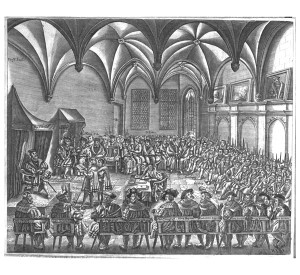
(14) Founding of the Church of Scotland (1558) – In 1557, in response to the pro-Catholic tendencies of Queen Mother Mary of Guise, the Protestant leaders in Scotland united and formed what became known as he Lords of the Congregation. They established ties with the English protestants and called John Knox back from Switzerland as they formed the Church of Scotland in 1558. Throughout conflict with French armies requested by he Queen Mother, Knox encouraged the protestants. Eventually the French armies withdrew and the Church Of Scotland was firmly established, despite the Queen Mother’s efforts to overthrow it.
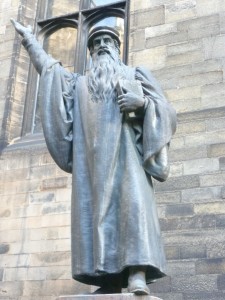
(15) Opening of the Genevan Academy under Beza (1559) – Under the direction of John Calvin, Theodore Beza founded the Genevan Academy, which would later become the University of Geneva. This was a lifelong dream of Calvin and it educated students under Calvinist principles. Under its influence, Calvinism was spread to almost every part of Europe leading to the founding of reformed churches in many countries. Under the direction of Beza even after Calvin’s death it continued to educate reformers for generations and sent them out in all directions.

(16) Thirty Nine Articles promulgated by Queen Elizabeth (1562) – These articles serve as a the doctrinal foundation for the church of England. While it rejects several specifically Roman Catholic doctrines, it does not force a choice between any of the competing Protestant views. These articles laid the foundation for doctrinal inclusiveness of the Anglican church and those churches derived from it.

(17) Massacre of St. Bartholomew’s Day (1572) – In France, Protestantism had a very difficult an bloody start. The Kings variously supported and persecuted Protestants (known in France as the Huguenots). Charles IX, convinced that there was a Protestant plot to take his throne from him, and the leader of that plot being the French protestant leader, Coligny, ordered a massacre for St. Bartholomew’s day, August 24, 1572. Over 2,000 were killed in Paris and even in the Louvre itself, and the killing spread throughout the country, eventually resulting in tens of thousands killed, including entire families.
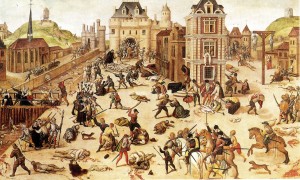
(18) Edict of Nantes (1598) – Finally after years of war, King Henry IV of France (the winner of the ‘War of the Henries’ – no kidding), though he had become a Catholic to win the French throne, did not forget his former faith. He proclaimed the Edict of Nantes and granted the Huguenots freedom of worship in all places where they had churches by the previous year, except Paris. They were allowed to keep the secured towns they had possessed by 1597. At least for a time, the bloody religious battles in France were over.

(19) Publication of the Vizsoly Bible in Hungarian (1607) – Much like the publication of the New Testament in German was beneficial for the German language, the publication of the Bible in Hungarian, the Vizsoly Bible, was beneficial to both the spiritual welfare of the Hungarian people and their language. This Bible was important for it provided a translation for a country in which as many as four fifths of the population was protestant.

(20) Publication of the “Remonstrance” (1610) – The publication of the Remonstrance in 1610 in Holland documented the five articles under debate in Holland between Gomarus (a pure ‘Calvinist’) and Arminius (who appeared to disagree on some points with Calvin). The publication of the Remonstrance was you clarify the beliefs of the “Arminian Party” in relation to the Gomarus Party of the Dutch church. Since the church was supported by the government at the time, any potential heresy was akin to treason against the government, so the debate was very serious. This publication was designed to garner public support for the Remonstrant beliefs and clarify their beliefs in response to criticisms of heresy (such as Pelagianism). The matter would not be settled until the Synod of Dort.
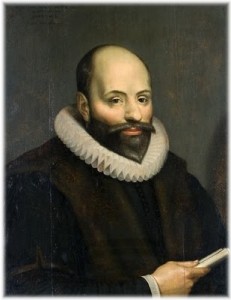
(21) Publication of the King James Version of the Bible (1611) – Despite the conflict between the Puritans in the House of Commons and King James over church government, they were able to collaborate to publish the King James version of the Bible in English. The English language was at a high point in its development. In 1611, Shakespeare had just finished writing the Tempest. The “thee’s” and “thou’s” of the King James Version (the KJV for short) would continue for years, continuing to befuddle young elementary students in the 21st century. The English language was standardized and only minor spelling changes were made to the text for many years.
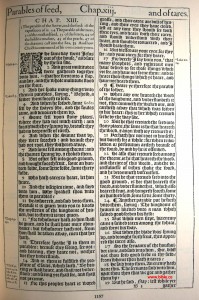
(22) Thirty Years War (Defenestration of Prague) (1618-1648) – The Peace of Augsburg was coming apart at the seams in the opening years of the seventeenth century. The Duke of Bavaria felt called to stamp out Protestantism and forcibly convert people to Catholicism. Bohemian Protestants revolted against the King of Bohemia’s representatives’ and threw them out of a window. The lived because they landed in a pile of manure. These events and a series of alliances and political maneuvering lead to a conflict involving all major powers in Europe in the bloodiest and most devastating war in Europe prior to the twentieth century.

(23) Synod of Dort (1619) – In order to respond to the Remonstrants and their five articles, the Dutch called the Synod of Dort and invited theologians from reformed all over Europe to join in the council. The council responded to each of the five articles of the Remonstrants, crafting what as become known as the five points of Calvinism. (Calvinism of course, being made up of four books, has more than five points.) After the work of the synod, Arminianism, as the beliefs of the Remonstrants came to be called was condemned as heretical and those believing it were persecuted by exile or imprisonment. It was largely through other churches (such as Methodists) that the Arminian beliefs would gain strength.
